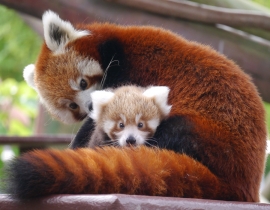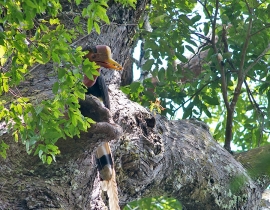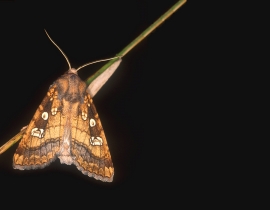Posted March 26, 2014 in All
The Conservation Breeding Specialist Group (CBSG) is a Specialist Group of the World Conservation Union’s (IUCN’s) Species Survival Commission (SSC). It provides species conservation planning expertise to governments, specialist groups, zoos and aquariums, and other wildlife organizations, by using expert facilitation and the application of science-based planning tools. CBSG is dedicated to planning a future for global wildlife species.
In November 2013, CBSG participated in giant panda conservation activities in China. Over 230 giant panda experts got together to discuss research activities and conservation achievements, and identified current pressing issues and challenges for this species. About 60% of giant panda habitat, supporting over 70% of the wild population, is now protected in 64 nature reserves. Increased efforts are underway to develop an effective release programme to reinforce wild populations from the strong captive population. Specific breeding recommendations have been put forward for 2014, with some offspring produced for release training efforts. About 65 disease and giant panda experts also gathered to identify priority wildlife disease issues and objectives, as well as research and training needs for this species.
In November, a Regional Species Management Plan (RSMP) for orang-utans was formed, which is a collaborative effort among key Asian zoos to work together to maintain genetically viable ex situ captive populations in Asia. This RSMP is the first such programme of its kind and plans to use the orangutan as a model species for future additional regional programmes. The group agreed to meet again in late 2014 to develop a masterplan for orangutans in Asian zoos.
Also in November 2013, a Population and Habitat Viability Assessment (PHVA) workshop was held for the red panda in India. The aim of the workshop was to identify habitats, distribution ranges, degree of fragmentation, and threats to red pandas in India and the border areas of Nepal and Bhutan, and to develop a strategy to conserve them in natural habitats in these areas. A report will be produced on the discussions and recommendations to carry red panda conservation forward.
The greater sage is one of the top priority species of conservation concern in Canada. Populations have declined by 98% in the past 25-45 years to about 100 adults in Canada, split into two isolated populations. A Population and Habitat Viability Assessment (PHVA) workshop was held in January 2014. The workshop worked to further identify management actions to reduce the primary threats driving population decline and to explore strategies to counteract the immediate risks to this small population and prevent imminent extirpation from Canada. Modelling suggests that recent reproduction and survival rates are too low to sustain this population and will likely result in extinction within 10 years if conservation action is not taken. Possible options for conservation include translocations from wild to wild and captive to wild for both population reinforcement and reintroduction. The development of an ex situ captive population as an assurance population against extinction and a potential future source for translocations was viewed as an important and urgently needed.



